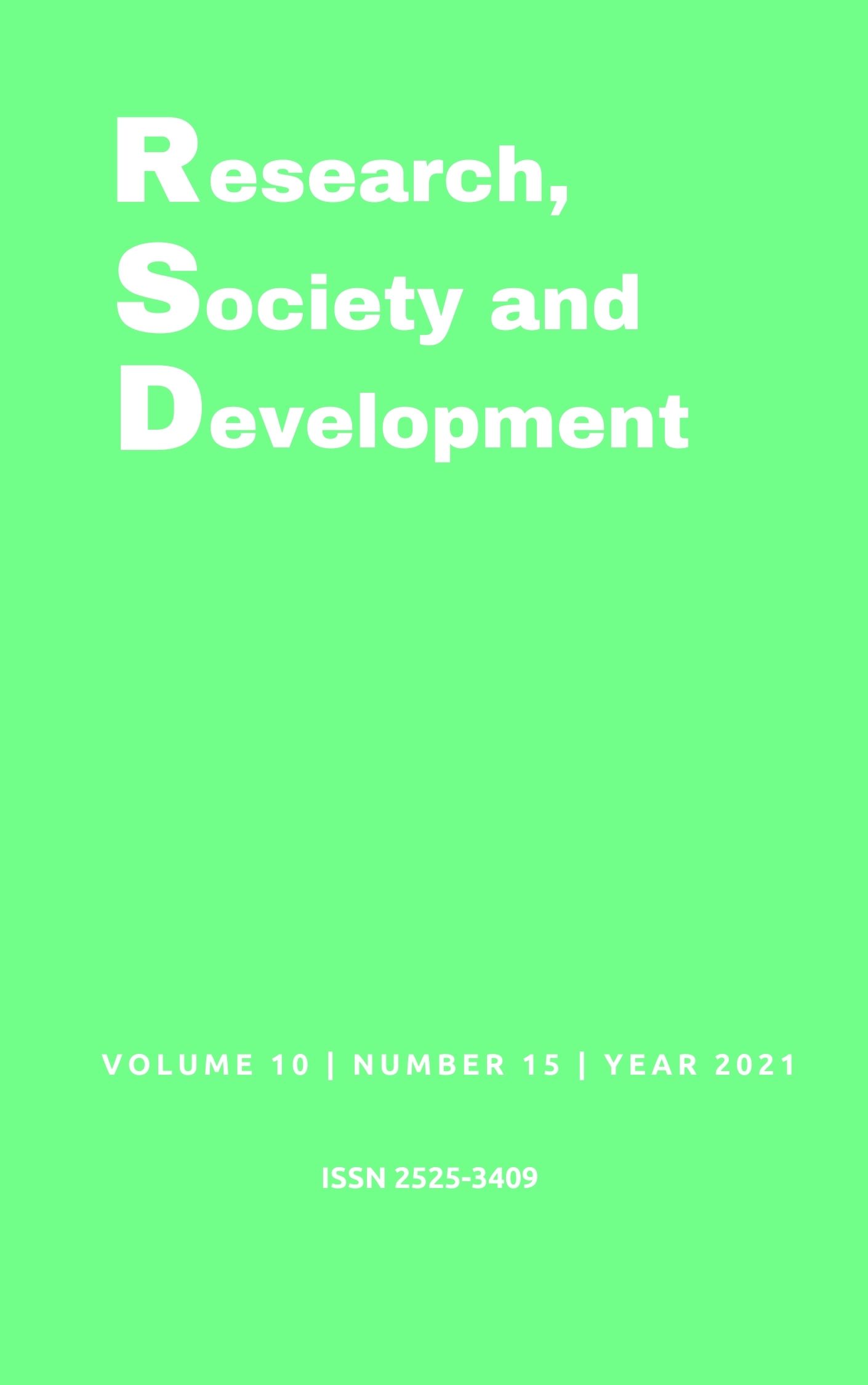Treinamento em radiologia utilizando técnicas de realidade virtual: uma breve revisão do estado da arte
DOI:
https://doi.org/10.33448/rsd-v10i15.22507Palavras-chave:
Estado da arte; Radiologia; Realidade Virtual; Treinamento.Resumo
As áreas da radiologia diagnóstica e intervencionista utilizam amplamente imagens geradas através de raios X. Como exemplo, pode-se citar a mamografia como exame com base nessa modalidade de geração de imagens. O procedimento de aquisição de imagens é realizado por profissionais que devem ser qualificados para exercer a atividade, bem como devem passar por cursos de atualização e/ou reciclagem. Nesta via, treinamentos utilizando técnicas de Realidade Virtual tem sido amplamente utilizado na área da saúde. Assim, este trabalho apresenta uma breve revisão bibliográfica e o estado da arte de sistemas computacionais que utilizam a Realidade Virtual para treinar os profissionais em radiografia.
Referências
Agência Nacional de Vigilância Sanitária. (2019). Resolução – RDC NO 330, de 20 de dezembro de 2019. Brasil, Ministério da Saúde.
Bigdeli, S., & Kaufman, D. (2017). Digital games in medical education: Key terms, concepts, and definitions. Medical journal of the Islamic Republic of Iran, 31, 52.
Bridge, P., Gunn, T., Kastanis, L., Pack, D., Rowntree, P., Starkey, D., ... & Wilson-Stewart, K. (2014). The development and evaluation of a medical imaging training immersive environment. Journal of medical radiation sciences, 61(3), 159-165.
Caldas, F. A. A., Isa, H. L. V. R., Trippia, A. C., Bíscaro, A. C. F. P. J., Souza, E. C. C., & Tajara, L. M. (2005). Quality control and artifacts in mammography. Radiologia Brasileira, 38(4), 295-300.
Cardoso, A., Kirner, C., Júnior, E. L., & Kelner, J. (2007). Tecnologias e ferramentas para o desenvolvimento de sistemas de realidade virtual e aumentada. Editora Universitária UFPE, 1-19.
Coop, P., Cowling, C., & Lawson, C. (2016). Tomosynthesis as a screening tool for breast cancer: A systematic review. Radiography, 22(3), e190-e195.
Dörner, R., Göbel, S., Effelsberg, W., & Wiemeyer, J. (2016). Serious games. Basel, Switzerland: Springer International Publishing.
INCA, I. N. de C. J. A. G. da S. (2015). Diretrizes para a detecção precoce do câncer de mama no Brasi. Serviço de Educação e Informação Técnico-Científica Área de Edição e Produção de Materiais Técnico-Científicos.
INCA, I. N. de C. J. A. G. da S. (2019). Atualização em mamografia para técnicos em radiologia. Serviço de Educação e Informação Técnico-Científica Área de Edição e Produção de Materiais Técnico-Científicos.
INCA, I. N. de C. J. A. G. da S. (2021). Detecção precoce do câncer. Serviço de Educação e Informação Técnico-Científica Área de Edição e Produção de Materiais Técnico-Científicos.
Machado, L. D. S., Moraes, R. M. D., Nunes, F. D. L. D. S., & Costa, R. M. E. M. D. (2011). Serious games baseados em realidade virtual para educação médica. Revista brasileira de educação médica, 35, 254-262.
Malhotra, V. M., Kabra, P. R., & Malhotra, R. (2017). Attitudes and practices of medical students regarding video-games: should community medicine educationists get serious about serious games. International Journal Of Community Medicine And Public Health, 4(3), 729-733.
Migowski, A., Silva, G. A., Dias, M. B. K., Diz, M. D. P. E., Sant’Ana, D. R., & Nadanovsky, P. (2018). Diretrizes para detecção precoce do câncer de mama no Brasil. II-Novas recomendações nacionais, principais evidências e controvérsias. Cadernos de Saúde Pública, 34, e00074817.
Nguyen, H. (2007). GPU Gems 3 (3rd ed.). Addison-Wesley Professional. https://doi.org/10.5555/1536934
O'Connor, M., Stowe, J., Potocnik, J., Giannotti, N., Murphy, S., & Rainford, L. (2021). 3D virtual reality simulation in radiography education: The students' experience. Radiography, 27(1), 208-214.
OPAS, O. P.-A. de S. (2020). Câncer, Fact Sheet. Retrieved Nov 10 2021, from https://www.paho.org/en/topics/cancer.
Sabino, S. M. P. D. S., Silva, T. B., Watanabe, A. H. U., Syrjänen, K., Carvalho, A. L., & Mauad, E. C. (2014). Implementation of a clinical quality control program in a mammography screening service of Brazil. Anticancer research, 34(9), 5057-5065.
Sapkaroski, D., Baird, M., McInerney, J., & Dimmock, M. R. (2018). The implementation of a haptic feedback virtual reality simulation clinic with dynamic patient interaction and communication for medical imaging students. Journal of medical radiation sciences, 65(3), 218-225.
Süncksen, M., Bendig, H., Teistler, M., Wagner, M., Bott, O. J., & Dresing, K. (2018, May). Gamification and virtual reality for teaching mobile x-ray imaging. In 2018 IEEE 6th International Conference on Serious Games and Applications for Health (SeGAH) (pp. 1-7). IEEE.
Tori, R., & da Silva Hounsell, M. (2020). Introduçao a realidade virtual e aumentada. Interação, 7, 11.
Yin, R. K. (2015). Estudo de Caso: Planejamento e métodos. Bookman editora.
Wang, R., DeMaria Jr, S., Goldberg, A., & Katz, D. (2016). A systematic review of serious games in training health care professionals. Simulation in Healthcare, 11(1), 41-51.
Wilcocks, K., Halabi, N., Kartick, P., Uribe-Quevedo, A., Chow, C., & Kapralos, B. (2017, August). A virtual cardiac catheterization laboratory for patient education: The angiogram procedure. In 2017 8th International Conference on Information, Intelligence, Systems & Applications (IISA) (pp. 1-4). IEEE.
Downloads
Publicado
Como Citar
Edição
Seção
Licença
Copyright (c) 2021 Paulo Camargos Silva; Gabriel Fernandes Cyrino; Camilo de Lelis Barreto Jr; Edgard Afonso Lamounier Junior; Alexandre Cardoso ; Ana Claudia Patrocinio

Este trabalho está licenciado sob uma licença Creative Commons Attribution 4.0 International License.
Autores que publicam nesta revista concordam com os seguintes termos:
1) Autores mantém os direitos autorais e concedem à revista o direito de primeira publicação, com o trabalho simultaneamente licenciado sob a Licença Creative Commons Attribution que permite o compartilhamento do trabalho com reconhecimento da autoria e publicação inicial nesta revista.
2) Autores têm autorização para assumir contratos adicionais separadamente, para distribuição não-exclusiva da versão do trabalho publicada nesta revista (ex.: publicar em repositório institucional ou como capítulo de livro), com reconhecimento de autoria e publicação inicial nesta revista.
3) Autores têm permissão e são estimulados a publicar e distribuir seu trabalho online (ex.: em repositórios institucionais ou na sua página pessoal) a qualquer ponto antes ou durante o processo editorial, já que isso pode gerar alterações produtivas, bem como aumentar o impacto e a citação do trabalho publicado.

